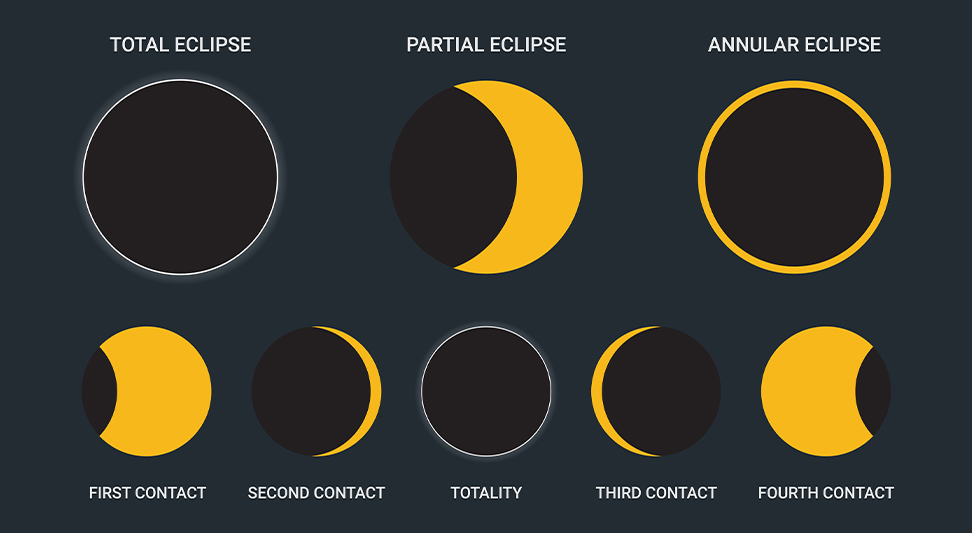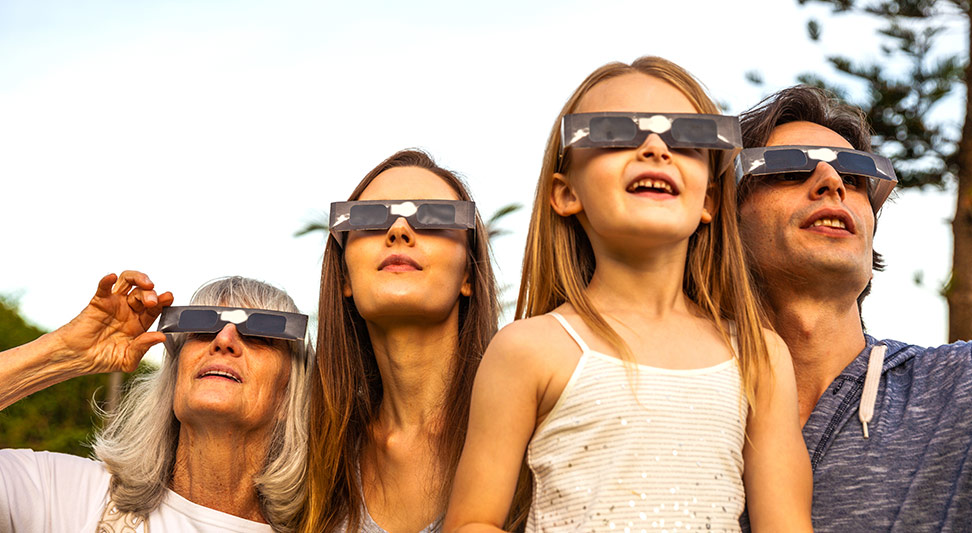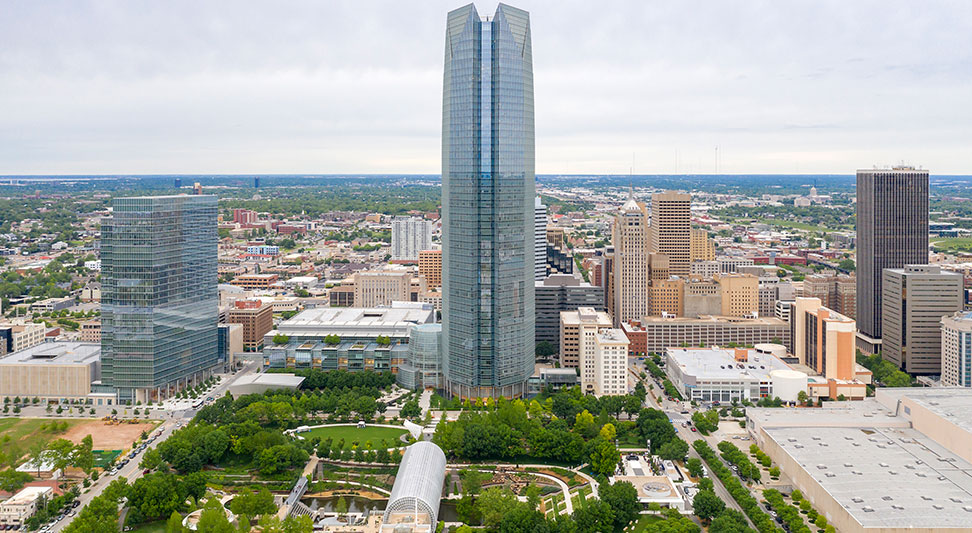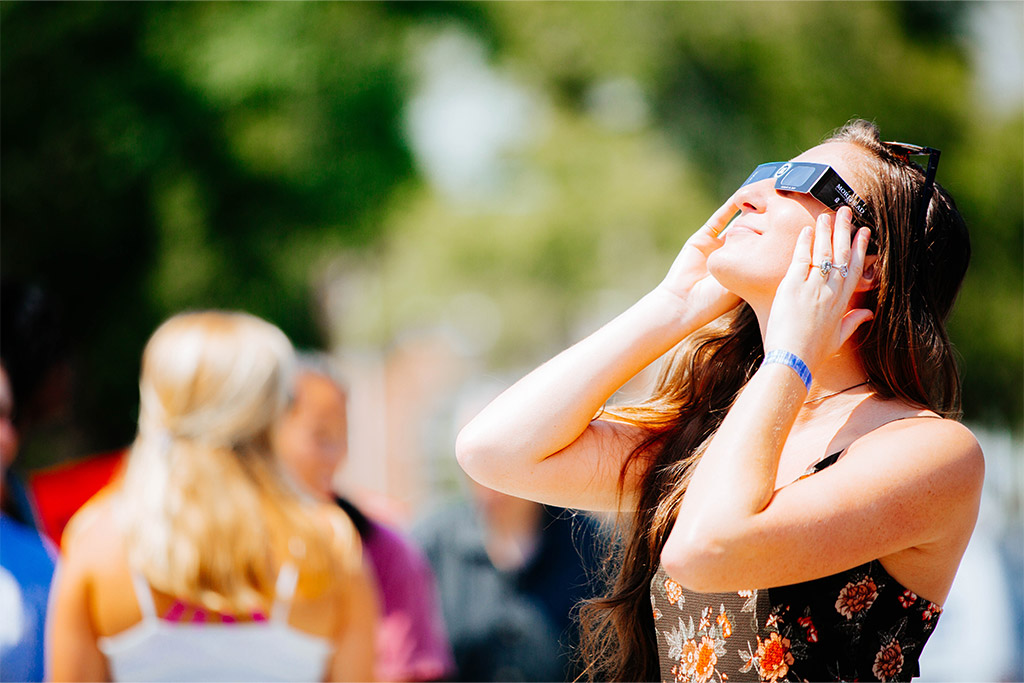Are you ready for a celestial spectacle?
On October 14, 2023, the United States will be treated to a stunning natural phenomenon – an annular solar eclipse. While these events are awe-inspiring, they also pose potential risks to your eyes if not observed safely.
So, before you run out and cast your eyes to the spectacle in the sky, let’s explore what a solar eclipse is, where you can witness it in Oklahoma City, how your eyes can be affected, and most importantly, how to protect your eyes while watching the moon crawl across the sun.
Understanding Solar Eclipses

A solar eclipse occurs when the moon passes between the sun and Earth, casting a shadow on our planet. An annular eclipse is a unique type of solar eclipse where the moon covers the center of the sun, leaving a fiery ring, or “ring of fire,” around the edges.
The Best Solar Eclipse Seats in the U.S.
This annular solar eclipse will be visible in parts of the United States, Mexico, and many countries in South and Central America. In the U.S., the eclipse will track across parts of Oregon, Nevada, Utah, Arizona, New Mexico, and Texas.
Oklahoma City’s Eclipse Schedule
Although Oklahoma is not in its direct path, the eclipse will still be a spectacular sight across the state with 70-80% coverage of the sun. In Oklahoma City, the moon will cover approximately 78% of the sun.
The eclipse will begin at 10:21 a.m. and reach maximum eclipse at 11:49 a.m. At 1:23 p.m., the moon will finish its course.
Protecting Your Eyes During a Solar Eclipse

Now that you know where and when to experience the eclipse, let’s discuss the critical topic of how to watch it safely.
For starters, staring at the sun during an eclipse is incredibly dangerous. Even with the moon covering most of the sun, the intense radiation can cause severe damage to your eyes. The only time it’s safe to gaze at a solar eclipse without special equipment is when the moon has completely hidden the sun. Even then, the total eclipse may last for a very short time, so it’s easy to get solar burn on your retina if you’re looking at it when the moon moves away.
Here are some symptoms that can occur from looking at a solar eclipse without proper eye protection:
- Solar retinopathy or eclipse retinopathy. This is the primary risk associated with staring at the sun. It results in damage to the central retina and can lead to vision problems, loss of central vision, or even blindness.
- Distorted vision
- Altered color vision
- Temporary vision loss
- Permanent vision loss
Damage to your retina caused by intense light exposure can be temporary or permanent but is typically painless. Many people only realize damage has occurred hours or days later. If you experience symptoms after viewing a solar eclipse, immediately schedule an appointment with an eye care professional.
Safe Ways to Watch the Eclipse
Solar Eclipse Glasses – These specially designed glasses are made with solar filters that block harmful rays. Always ensure they have the ISO 12312-2 safety standard certification.
Pinhole Projection – Create a pinhole projector using cardboard or paper to project an image of the eclipse onto a surface. It’s a safe and fun way to experience the eclipse.
Welder’s Glass – Welder’s glass with a rating of #14 or higher can be used to view the eclipse safely.
Mylar Filters – Approved solar filters made of aluminized mylar are safe for eclipse viewing and can be used with telescopes or binoculars.
How to Properly Use Solar Eclipse Glasses
When using solar eclipse glasses, follow these guidelines:
- Inspect the glasses for any damage or scratches before use.
- Put the glasses on before looking at the sun.
- Wear your solar eclipse glasses for the duration of the eclipse, except for the very brief period of time during a total eclipse when the sun is completely covered. Even then, remove your glasses with caution.
- Supervise children to ensure they’re using eyewear properly.
Purchase Approved Solar Eclipse Glasses from Science Museum Oklahoma
What NOT to Do During a Solar Eclipse
- Do not use your phone or any other digital device to look at the sun directly. Doing so can cause severe damage to the device’s sensors and your eyes if you inadvertently look at the sun while lining up the shot.
- Do not look at the sun through a camera without proper eye protection. Even through the camera’s viewfinder, the sun can damage your eyes just like looking directly at it.
- Do not use unsafe filters on any viewing device, such as telescopes, binoculars, or cameras. Always use certified solar filters designed for these devices.
- Do not look at the sun for any amount of time without eye protection.
Photographing and Recording the Eclipse
Whether you’re an aspiring astrophotographer or an average joe wanting a cool memory, here are some important tips for capturing an eclipse effectively and safely:
- Pack the right equipment. You’ll need eclipse glasses to shield your eyes, the correct solar filter for your camera, and a trusty tripod.
- Practice beforehand. Before the big day, practice setting up your camera on a sunny afternoon. This will help you get comfortable handling your camera’s solar filter and dialing in the settings while wearing your eclipse glasses.
- Consult with NASA. Refer to NASA’s solar eclipse maps to pinpoint the prime spots for eclipse-watching. During a total eclipse, being as close as possible to the center of totality can grant you more time to savor and capture the celestial show.
- Check the weather. Weather conditions have a profound impact on how clearly the eclipse can be captured. If possible, have a backup plan to shift to a different spot with better visibility.
- Create a game plan. Knowing precisely when and where the eclipse will take place will help you decide when to get to your viewing spot, where to position your camera, and how to frame your shots.
Hot Spots to OK-See the Eclipse

Even though Oklahoma isn’t in the direct path of the annular eclipse, OKC will still witness a stunning 78% coverage. Thanks to the Oklahoma City metro’s relatively flat and expansive geography, there are several excellent public locations to see this event.
Myriad Botanical Gardens, Scissortail Park, and Lake Hefner each offer ample views of the sky with photogenic backgrounds and foregrounds. But if you just want to experience the eclipse, your own front yard or backyard likely provides a clear view of the sky.
Get Ready for the Next Eclipse
The upcoming annular eclipse on October 14 is going to be spectacular, but we’re “totally” looking forward to the next one. On April 8, 2024, a total solar eclipse will be visible in Oklahoma and a small band of states extending to the northeast from Texas all the way to Maine.
Keep Solar Eclipse Safety in Sight
The annular solar eclipse of October 14, 2023, promises to be a breathtaking event. Just remember to prioritize your eye safety by using proper viewing methods and protecting your eyes. So, grab your eclipse glasses, gather some sol mates, and get ready for an astronomically awesome view from the best place on Earth.

